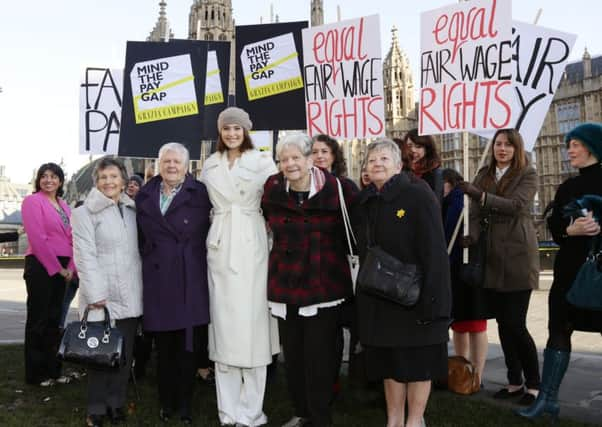Linda Stewart: Equal pay for equal work '“ the business case for gender equality


But instead of feeling sorry for the employers who might face a barrage of discrimination claims, we should be encouraging those on the rough end of pay inequality to make a statement loud and clear: equal pay for equal work.
Sound familiar?
Despite the efforts of the women at Dagenham in 1968, just 32 per cent of women believe they are paid the same as their male colleagues for equal work. And although almost half of workers are prepared to launch an equal pay claim, a staggering 84 per cent said they thought starting a legal claim against their employer might damage their future career prospects.
Advertisement
Hide AdAdvertisement
Hide AdEmployers have been far too successful in instilling a culture of pay secrecy in the workplace – enabling the gender pay gap to remain unaddressed for decades.
Businesses have had the last 45 years to achieve pay parity yet here we are, miles from equality. If companies are unwilling to take the first steps, the transformation will only happen if employees, and women especially, speak up and start making real demands.
The business case for diversity in the workplace is substantial and convincing. A failure to nurture talented female employees is short-sighted and will lead to reduced engagement, low morale and reduced productivity. Yet so many businesses continue to do just that.
There are huge financial, talent, and customer imperatives to addressing the issue of equality in the workplace, but I continue to see examples of business environments that are hostile to the most crucial benefit for many women workers: flexibility.
Advertisement
Hide AdAdvertisement
Hide AdSadly, it is glaringly obvious that most pay and remuneration packages for senior positions are tailored to the needs and wants of men – entirely lacking in flexibility and other employee benefits that cater to working mothers especially.
International business travel might not be impossible for a working mother if the employee benefits included childcare or the ability to bring family members with them on occasion.
Yet such flexibility would more often be considered pandering to women rather than aimed at attracting talent.
Currently most women who do secure senior roles rarely stay for long; they leave as soon as the lack of flexibility around working arrangements becomes intolerable. And although it is a costly and short-lived recruitment exercise for business, many continue to leak female talent in exactly this fashion.
Advertisement
Hide AdAdvertisement
Hide AdEquality doesn’t have to be gloomy. A pay review and restructuring with diversity in mind can be a truly exciting exercise that improves the competitiveness of the organisation. All it would take to level out pay is for decision makers and recruiters to stop offering enhanced packages to male candidates and simply match the salary to the job.
I want to encourage all employers, regardless of size, to make it a priority this year to carry out an equal pay audit and consider simplifying their pay schemes.
Undertaking a job evaluation exercise provides the perfect opportunity for employers to do this and it doesn’t take long; essentially it involves determining what a role is worth – at which point it is easy to see if anyone is paid more than their colleagues for equal work, or if their salary falls outside the appropriate scale.
If businesses don’t begin to redress pay inequality, we will soon see more women bringing equal pay claims. They will force businesses to listen. And when it becomes too expensive to ignore their claims, perhaps we will begin to see a cultural change.
Advertisement
Hide AdAdvertisement
Hide AdBut I want employers to realise that issues of pay inequality aren’t always resolved in court. With senior management buy-in for pay transparency, closing any gender pay gap could be achieved within 12 months.
Employers should be transparent with all staff about salary rates and ranges applicable to particular roles. Only with 100 per cent transparency can we close the gender pay gap for good. The ball is in the employers’ court.
The only real question now is whether businesses will sit back and wait for the employment claims to start coming, or be pro-active in turning this old idea of equal pay for equal work into reality, and reap the benefits.
Linda Stewart is a partner and head of employment at Yorkshire law firm Simpson Millar.